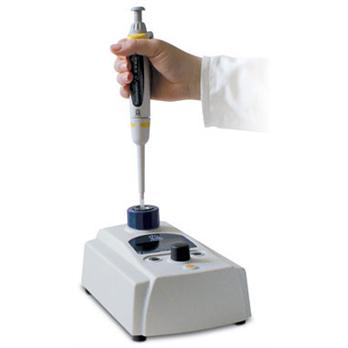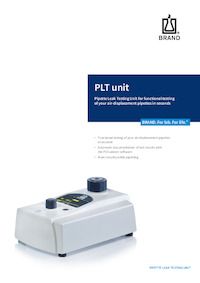In the meticulous world of scientific research and laboratory work, precision is not just a goal; it's an absolute necessity. Every measurement, every transfer of liquid, must be exact to ensure the integrity of results. Among the most fundamental tools in any lab is the pipette – often informally referred to as a 'pepette' – a device critical for accurately dispensing small volumes of liquid. However, even the most sophisticated 'pepettes' can suffer from a silent, often invisible, enemy: leaks. These seemingly minor issues can have major repercussions, compromising experiments, wasting valuable reagents, and ultimately, undermining the reliability of your data.
This article delves into the critical topic of 'pepette' leaks. We'll explore what constitutes a leak, why they occur, the significant impact they have on your work, and most importantly, how modern technology and diligent practices can detect and prevent them, ensuring your laboratory maintains the highest standards of accuracy and efficiency.
The Silent Saboteur: Why 'Pepette' Leaks Matter
What is a 'Pepette' Leak?
At its core, a 'pepette' leak refers to an unintended flow of liquid or air through a compromised part of the pipette's sealing system. The leak rate is a measure of the quantity of material that flows through a leak per time unit. What makes these leaks particularly insidious is that they are often not detectable by the naked eye. Imagine trying to precisely measure 10 microliters of a crucial reagent, only for a fraction of it to escape unnoticed. This unseen loss leads to significant volume errors, directly impacting the accuracy of your dispensed volume.
- Hdmovie2 Movies Your Ultimate Destination For Streaming Masterpieces
- Morgan Vera Onlyfans Leaks Nude Photos What You Need To Know
- Caitlin Clarks Shower Video A Closer Look
- Vegamovies Nl 4k Your Ultimate Streaming Experience
- Lara Rose Erome Free Porn Videos Photos
A simple liquid leak test will help determine if a pipette sealing system is compromised. This arises from damage either to the seals, pistons, or tip cones. Any breach in this airtight system means your 'pepette' is not delivering the volume it's supposed to, leading to inconsistent and unreliable data.
The Impact on Your Results
The consequences of 'pepette' leaks extend far beyond a mere annoyance. They can:
- Compromise Experimental Integrity: Inaccurate dispensing means your experimental conditions are not what you intended, leading to flawed results and potentially misleading conclusions.
- Waste Resources: Expensive reagents and precious samples are squandered when not delivered precisely. This can significantly increase operational costs.
- Delay Research: Incorrect data often necessitates repeating experiments, consuming valuable time and delaying breakthroughs.
- Affect Patient Safety: In clinical diagnostic labs, even minute volume errors can lead to incorrect diagnoses or treatment decisions, with potentially severe consequences.
- Undermine Reputation: For research institutions and commercial labs, consistent inaccuracies can damage credibility and trust.
Common Culprits: What Causes 'Pepette' Leaks?
Understanding the root causes of leaks is the first step towards prevention. Most 'pepette' leaks stem from issues within the internal sealing mechanisms or the interface with the pipette tip.
- Explore Pepper0 Family Anime Art Comics Creative Journey Discover Now
- Somali Wasmo Channels Telegram Groups Explore Now
- Ullu Telugu Web Series Movierulz The Ultimate Guide For Fans
- Somali Wasmo Family Telegram Channel 2021 The Ultimate Guide
- Bradley Cadenhead Texas The Untold Story Of A Rising Star
Here are the most common culprits:
- Damaged Seals: This is one of the most common causes of leaking, and luckily the easiest fix. Over time, the O-rings or other seals within the pipette can wear out, crack, or become dry, losing their ability to create an airtight seal.
- Damaged Pistons: The piston, which moves up and down to create the vacuum for aspiration and dispensing, can become scratched, bent, or corroded. Any surface imperfection can prevent a proper seal with the internal cylinder.
- Damaged Tip Cones: The tip cone is the part of the pipette where the disposable tip attaches. If this area is chipped, cracked, or worn, the seal between the plastic tip and the shaft of the pipette needs to be airtight to prevent leaks. Even a microscopic imperfection can lead to air or liquid escaping.
- Improper Tip Seating: While not a pipette defect itself, an improperly seated tip can mimic a leak. If the tip is not pushed on firmly enough or is incompatible with the pipette, an airtight seal won't form.
- Accumulated Debris: Over time, dust, dried liquids, or other contaminants can build up on the seals or piston, interfering with their smooth operation and sealing capabilities.
Detecting the Undetectable: The Power of 'Pepette' Leak Testers
Given that most leaks are invisible to the naked eye, relying on visual inspection alone is insufficient. This is where specialized diagnostic tools come into play, revolutionizing 'pepette' maintenance.
The Brand Pipette Leak Tester (PLT Unit)
The BrandTech Pipette Leak Tester (PLT Unit), also known as the Brand PLT Pipette Leak Tester (patent pending), is a prime example of such a device. This innovative unit is designed specifically for air displacement pipettes and boasts remarkable capabilities:
- Rapid Detection: It finds even the smallest leaks within seconds. This rapid turnaround time is crucial for busy laboratories.
- Precision Measurement: In dry conditions, the PLT unit accurately measures the exact displacement volume as well as the leak of the pipette. You can read the dispensed volume and the leak on the Atmos screen.
- Wide Range Compatibility: You can check pipettes from 2µl to 1250µl, covering a vast majority of commonly used laboratory pipettes.
- Non-Invasive Testing: The test is typically performed without liquid, minimizing contamination risks and cleaning time.
By using a PLT unit, laboratories can proactively identify and address issues before they lead to significant volume errors, saving time, money, and ensuring data integrity.
Beyond Detection: Prevention and Maintenance
While advanced leak testers are invaluable for diagnosis, a comprehensive approach to 'pepette' integrity also involves proactive prevention and routine maintenance. Think of it like a car; you don't just fix it when it breaks down, you perform regular maintenance to prevent breakdowns.
Key Maintenance Practices:
- Regular Calibration and Service: Adhering to standards like ISO 8655 calibration service is crucial. Professional services, such as those offered by Rainin, have the capacity and expertise to meet your exact needs, including fast turnaround and the capacity to meet any laboratory's needs. Regular calibration ensures your 'pepettes' are dispensing accurately and can often catch potential leak issues early.
- Proper Handling and Storage: Always handle 'pepettes' with care. Avoid dropping them or banging them against surfaces, which can damage internal components or the tip cone. Store them upright in dedicated stands to prevent stress on the shaft and piston.
- Routine Visual Inspection: Even though leaks are often invisible, a quick visual check for obvious damage to the shaft, tip cone, or buttons before use can prevent bigger problems.
- Using Quality Tips: Always use high-quality, manufacturer-recommended pipette tips that are designed to create an airtight seal with your specific 'pepette' model. Ensure tips are seated firmly but without excessive force that could damage the tip cone.
- Cleaning and Decontamination: Follow manufacturer guidelines for routine cleaning and decontamination. This prevents the buildup of corrosive liquids or debris that can degrade seals and pistons over time.
- Timely Seal Replacement: As mentioned, damaged seals are a common and easy fix. If you suspect a seal issue, replacing it promptly can prevent further damage and restore accuracy.
Conclusion
The humble 'pepette' is a workhorse in the laboratory, but its precision is easily compromised by leaks. Often undetectable by the naked eye, these leaks can lead to significant volume errors, undermining the validity of your scientific work and incurring unnecessary costs. By understanding the common causes of leaks – from damaged seals and pistons to compromised tip cones – and by embracing modern detection technologies like the BrandTech PLT unit, laboratories can proactively safeguard their accuracy.
Investing in regular maintenance, professional calibration services, and diligent handling practices is not just about fixing problems; it's about upholding the highest standards of scientific integrity. In a field where every microliter counts, mastering 'pepette' precision through effective leak management is paramount to achieving reliable, reproducible, and impactful results.
Article Summary
This article explored the critical issue of 'pepette' (pipette) leaks in laboratory settings. It highlighted that leaks, often invisible, cause significant volume errors and compromise experimental accuracy. Common causes include damage to seals, pistons, and tip cones. The article emphasized the importance of specialized tools like the BrandTech PLT unit, which detects even the smallest leaks in air displacement pipettes within seconds, covering a range from 2µl to 1250µl. Finally, it detailed essential prevention and maintenance strategies, including regular ISO 8655 calibration, proper handling, and timely component replacement, underscoring that proactive measures are key to ensuring precision and reliability in laboratory work.
- Vegamovies 20 Nl Your Ultimate Destination For Hindi Movie Downloads
- Cinepulse Alternatives
- Gracie Bon More Free Nude Videos Pics Dont Miss Out
- Understanding The Essential Wudu Steps For Purity And Prayer
- Unraveling The Controversy The Camilla Araujo Sex Tape Saga


